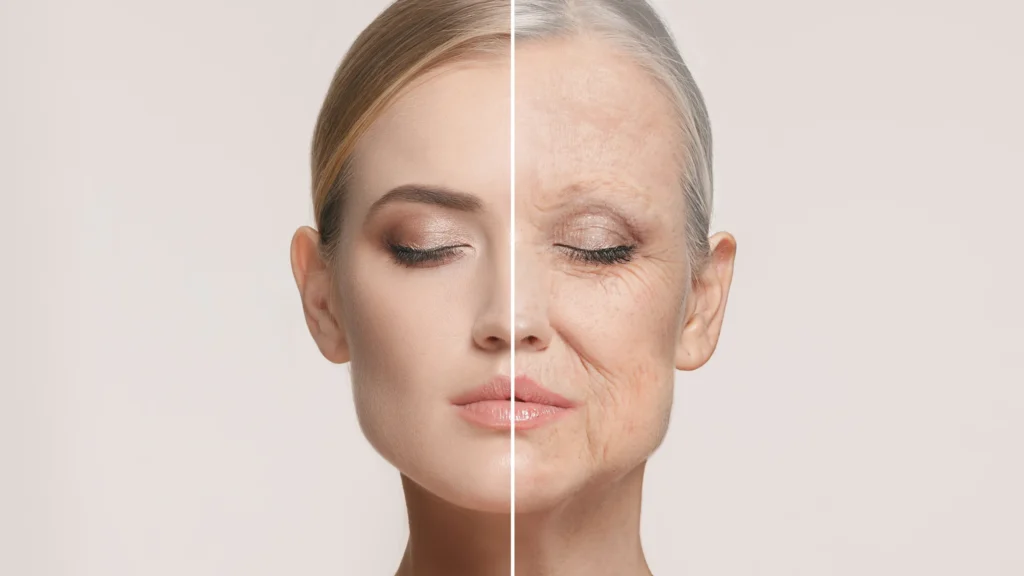If you’re exploring the world of natural supplements for healthy aging and vibrant well-being, you’ve undoubtedly come across two heavyweights: fisetin and quercetin. Both are powerful plant compounds called flavonoids, celebrated for their antioxidant properties. But as research unfolds, it’s becoming clear they aren’t interchangeable. One might be a superstar for clearing out old, dysfunctional cells, while the other is a trusted ally for calming inflammation and allergies.
So, the big question is, which one deserves a spot in your health regimen? As someone who has spent years digging into the science of supplements, I find the nuances between these two fascinating. This isn’t about declaring one an absolute “winner.” It’s about understanding their unique strengths to help you make the smartest choice for your specific goals. Let’s break it down.
What Are Fisetin and Quercetin? A Quick Introduction
First, let’s get acquainted. Both fisetin and quercetin belong to the same family of plant-based antioxidants, but they have different personalities and sources.
Fisetin: The Potent Senolytic Flavonoid
Fisetin is the exciting newcomer gaining serious attention, especially in the anti-aging community. While found in small amounts in foods like strawberries, apples, and onions, achieving a therapeutic dose from diet alone is nearly impossible. Its claim to fame is its potent senolytic activity—a remarkable ability to help the body clear out senescent cells. Think of these as “zombie cells” that linger, releasing inflammatory signals and accelerating the aging process.
Quercetin: The Well-Known Antioxidant Powerhouse
Quercetin, on the other hand, is the established veteran. It’s one of the most abundant flavonoids in the human diet, plentiful in foods like capers, red onions, kale, and green tea. For decades, it’s been researched and widely used for its powerful antioxidant and anti-inflammatory effects. It’s particularly famous for its ability to stabilize mast cells, which is why you’ll often find it in natural allergy relief formulas.
The Key Differences: A Head-to-Head Comparison
Here’s where things get interesting. While they share a common ancestry, their functional differences are what truly matter for your health strategy.
Senolytic Activity: Fisetin’s Clear Advantage
When it comes to acting as a senolytic, the evidence points strongly in fisetin’s favor. A landmark 2018 study from the Mayo Clinic screened ten different flavonoids and concluded that fisetin was the most potent natural senolytic. It effectively helps eliminate those damaging senescent cells, which is a cornerstone of modern anti-aging research. While quercetin also shows some senolytic properties, it’s generally considered less powerful in this specific role. For me, this is one of the most compelling reasons to pay attention to fisetin.
Anti-Inflammatory & Antihistamine Effects: Quercetin’s Stronghold
This is quercetin’s home turf. It has a long and robust history of research demonstrating its ability to inhibit inflammatory pathways and, crucially, to stabilize mast cells. Mast cells are the gatekeepers of your body’s histamine response. By keeping them stable, quercetin can help reduce the symptoms of seasonal allergies, making it a go-to for many during allergy season. While fisetin also has anti-inflammatory properties, quercetin’s specific mechanism for allergy support is better documented and more widely recognized.
Bioavailability: The Crucial Factor You Can’t Ignore
Here’s a challenge that plagues both compounds: on their own, neither fisetin nor quercetin is well-absorbed by the body. This is a critical point that many people miss. You can take a high dose, but if it doesn’t get into your bloodstream and cells, it’s a waste. Their poor water solubility and rapid metabolism mean that standard powders often pass through your system with minimal effect. We’ll touch on the solution to this puzzle in a moment.
Brain Health & Neuroprotection: An Emerging Battleground
Both flavonoids show promise in protecting brain cells. They can cross the blood-brain barrier and exert antioxidant effects within the brain, helping to combat oxidative stress—a key factor in cognitive decline. Some research suggests fisetin may be particularly effective at supporting memory and cognitive function, but this is an exciting and still-developing area for both compounds.
Comparison Table: Fisetin vs. Quercetin at a Glance
For a quick summary, here’s how they stack up:
| Feature | Fisetin | Quercetin |
|---|---|---|
| Primary Strength | Potent Senolytic (Anti-Aging) | Anti-Inflammatory & Antihistamine |
| Senolytic Activity | ★★★★★ (Very High) | ★★★☆☆ (Moderate) |
| Allergy Support | ★★☆☆☆ (Limited) | ★★★★★ (Very High) |
| Bioavailability (Standard Form) | ★☆☆☆☆ (Very Low) | ★☆☆☆☆ (Very Low) |
| Scientific Research | Emerging & Promising | Extensive & Established |
| Common Food Sources | Strawberries, Apples (Low amounts) | Onions, Capers, Kale (High amounts) |
Solving the Bioavailability Puzzle: How to Maximize Absorption
This is perhaps the most important section of this article. As we’ve established, the effectiveness of these amazing compounds is severely limited by their poor absorption. Fortunately, science has found a way around this.
- Why Most Flavonoids Are Poorly Absorbed: These molecules are naturally fat-soluble, not water-soluble. Since our digestive system is a watery environment, they struggle to dissolve and pass through the intestinal wall.
- Liposomal & Phytosome Technology: The modern solution is to encapsulate fisetin or quercetin in a protective lipid (fat) layer. This creates a tiny bubble called a liposome or phytosome. This structure not only protects the compound from being destroyed by stomach acid but also allows it to be more easily absorbed by the body’s cells. It’s a game-changer that dramatically increases bioavailability.
- Simple Tip: If you’re using a standard supplement without this technology, always take it with a source of healthy fats, like olive oil, avocado, or nuts. This can modestly improve absorption.
Can You Take Fisetin and Quercetin Together?
This is a common and excellent question. The answer is generally yes, and they may even offer synergistic benefits.
- The Synergy Argument: Because they work on slightly different (though sometimes overlapping) pathways, taking them together could provide a more comprehensive approach to managing inflammation and supporting cellular health. Think of it as having two skilled specialists working on the same team.
- Safety and Dosage: Both are considered safe for most people at standard recommended doses. However, it’s always wise to start with a lower dose to see how your body responds. As with any supplement, consulting with a healthcare professional before starting is the best course of action, especially if you have existing health conditions or are taking other medications.
Which One Should You Choose? A Goal-Oriented Guide
Let’s bring it all home. The best choice depends entirely on your primary health objective.
- Choose Fisetin If… Your main goal is anti-aging and leveraging the power of senolytics. If you’re focused on cellular rejuvenation and combating age-related decline, fisetin is the more targeted and potent choice.
- Choose Quercetin If… Your primary goal is allergy relief, managing inflammation, or general antioxidant support. If you’re looking for a natural antihistamine or a well-rounded anti-inflammatory, quercetin’s extensive research makes it a reliable first choice.
- Consider Both If… You want a comprehensive, multi-pronged approach. Combining a lower dose of both can give you the potent senolytic benefits of fisetin alongside the powerful anti-inflammatory and mast cell-stabilizing effects of quercetin.
Frequently Asked Questions (FAQ)
Is fisetin more powerful than quercetin?
When it comes to senolytic activity (clearing old cells), research shows fisetin is significantly more powerful. For general antioxidant or anti-inflammatory effects, they are more comparable, with quercetin having more research in specific areas like allergies.
What is the most powerful natural senolytic?
Based on current screening studies, fisetin is considered the most potent naturally occurring senolytic flavonoid discovered to date.
Who should not take fisetin or quercetin?
People who are pregnant or breastfeeding should avoid them due to a lack of safety data. Individuals on blood-thinning medications should exercise caution and consult their doctor, as high doses may have a mild blood-thinning effect.
The Bottom Line: A Tale of Two Powerful Flavonoids
Ultimately, the fisetin vs. quercetin debate isn’t about finding a single champion. It’s about appreciating the unique talents of two incredible natural compounds. Fisetin is the sharp, focused specialist for cellular anti-aging, while quercetin is the versatile and reliable defender against inflammation and allergies.
By understanding your own health goals, you can now confidently choose the flavonoid that aligns with your needs, ensuring your investment in your health is both intelligent and effective.


